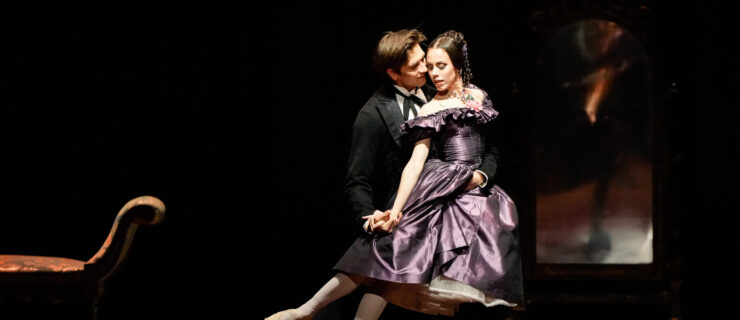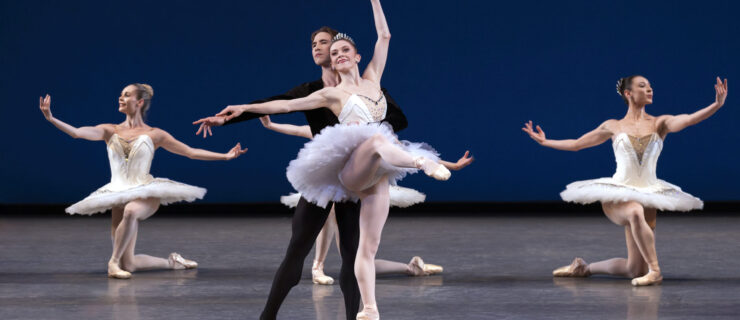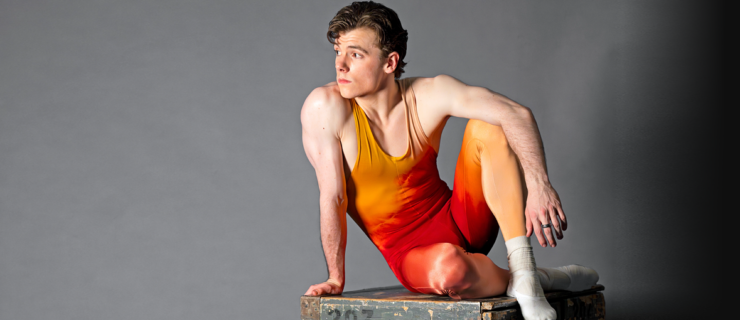Partner Trouble: What To Do When You Don't See Eye to Eye
This story originally appeared in the April/May 2015 issue of Pointe.
When former New York City Ballet principal Jonathan Stafford was a young corps member, he remembers taking a big gulp when he was first cast to partner a principal. “I was not strong enough, and she decided after dress rehearsal that I wasn’t ready,” he says. “So the artistic staff brought back her previous partner.” Despite his preparation, Stafford, now an NYCB ballet master, says he understood the decision. But in another casting shake-up later in the run, he was quickly put back in. “The second time around I was a better partner because the pressure of the debut was off and we were both more relaxed.”
Partnering is all about trust, an important relationship quality that must be adopted early and fostered every day. For any number of reasons—from height differences to dueling egos—that bond can be hard to form. But however tenuous the connection, partnering is still a job requirement. If you feel you’ve been dealt a mismatch, there is almost always a way to make it work. It might just take time and patience.

Sarasota Ballet’s Danielle Brown and Ricardo Rhodes in Ricardo Graziano’s Before Night Falls
Frank Atura, Courtesy Sarasota Ballet
Common Mismatch Scenarios
One of the problems most frequently cited by both dancers and artistic staff is when an inexperienced professional is paired with a veteran dancer. Principals and soloists may find themselves asking why they have to work with someone who might not know what they’re doing. “I advise the veterans to view it as a compliment,” says Kristi Capps, a ballet master at Kansas City Ballet. “Here is your opportunity to guide a younger dancer, who can learn how you want to do it. They may even become the best partner for you.” Danielle Brown, a principal dancer with Sarasota Ballet, agrees. “Sometimes the strength or skills are not there yet, but often those people are the most eager to learn.”
In addition, there are myriad differences between personalities, work ethic and style. For instance, one partner may be prone to over-rehearsing—something the other feels sucks the spark out of the dance. “You have to realize this is a give-and-take relationship,” says Capps. “Being accommodating is helpful, but it’s also important to notice when your partner needs a break.”
Though a chosen couple may be stepping on each other’s toes, Capps is unequivocal about the care artistic staff takes in considering each pairing. “There is always a reason for the casting,” she says. “It is thoughtful work where we are looking at strengths and weaknesses. It is not a punishment.” While you can’t always choose your partner, you always have the power to adjust your attitude and approach.
Open Your Ears and Mind
For Pacific Northwest Ballet principal Karel Cruz, communication is the only way to work out the kinks. “When I start working with someone new, I always try to listen and see what they need from my side,” says Cruz. “I might be doing something I don’t realize, and if my partner doesn’t say anything it can just get worse.” Take the time in rehearsal to line up your points of view. Sometimes it comes down to being supportive as your partner develops basic pas de deux skills, or listening to the music together to make sure you are hearing the same accent, says Kansas City Ballet artistic director Devon Carney.
For Brown, listening helped her work through a partnership that was on the rocks. “I can sometimes come across as bossy,” she says. “I was dancing with someone I had known for years and we were both stressed. He flat-out said ‘I don’t like how you are talking to me.’ I had to walk away and take some deep breaths, but it was the best thing he could have done.” Her partner’s honesty helped open a door to a discussion that allowed them to pull off the shows that followed.
If you tend to overstep, Brown recommends taking a time-out before talking. Don’t spit out everything you are thinking; rather, wait to see if a problem recurs before bringing it up. And when you do? “Vocalize what you need without putting your partner down,” advises Capps.
Cruz goes a step further in his diplomatic process by asking a question instead of making a demand. “I always try to find a way to say it without being rude. ‘What do you think about trying this?’ It makes it less mandatory, more about us, instead of pinning a problem on one person.”

Karel Kruz with Lesley Rausch in Pacific Northwest Ballet’s The Sleeping Beauty
Angela Sterling, Courtesy PNB
Remember Your Role
For men, partnering requires mastering an entirely new technique. “It took me time to develop my skills before I was a natural,” says Stafford. “While it’s the male partner’s responsibility to show off the ballerina, it is also important for her to play a vital role in keeping his confidence up.” Capps agrees and notes that both partners need to trust right away. “If you go in without it, there is going to always be that barrier,” she says. “The woman has to assume he has the best intentions—a lot of times it is just overcoming fear.”
There is a clear division of labor in any successful partnership, so try not to do each other’s job. Carney remembers being coached by Igor Youskevitch in Balanchine’s Tchaikovsky Pas de Deux. “He asked me, ‘Why are you doing the same thing as the girl? You need to be the ground for her lightness. You can’t be in the same realm as her.’ ” And his note to the woman? “Now, let him lead!”
When Nothing Seems to Help
“Partnering is in the practice, not the epiphanies,” says Carney. “If something isn’t working, all you can do is try it again, get back on the horse.” However, you can’t have fun if you’re caught in an endless loop of negativity. “It is possible to overwork,” Stafford warns. “If you think of each little move too much, you can become dancing robots.” Take a step back, leave a problem alone for the rest of rehearsal, then return to it on a new day, with a fresh perspective and positive attitude.
If all else fails and you’re still locking horns? “When I get really frustrated, I try to remind myself we’re human, we’re not perfect,” says Cruz. “Usually that reasoning works to diffuse any tensions and allows me to figure out what is really, technically, going wrong.” The only thing left to do is check your ego at the door and get back to work.





